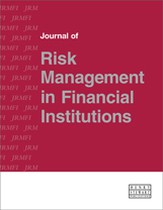Capital allocation for operational risk
Abstract
The allocation of consolidated operational risk capital to different business units or legal entities is a problem that up to now has not received widespread investigation. Nevertheless, this is an important problem, as the Basel II regulation and its annotations stress a number of demands for the allocation of operational risk capital in lieu of standalone calculations for all legal entities within banking groups. This paper presents a simple, yet statistically sound, framework to help cope with the technical requirements of the regulatory context.
The full article is available to subscribers to the journal.
Author's Biography
Michael Brunner is a member of the team responsible for developing and maintaining UniCredit Group’s operational risk capital model. This includes capital calculation, regulatory and economic capital allocation, and regulatory notification. Prior to joining the holding company of UniCredit Group one year ago, Michael worked as an IT consultant at HVB IS, where he was responsible for implementation and maintenance of the central operational risk management tool. Michael has a PhD in physics and a degree in business economics. He is the author of several articles.
Fabio Piacenza is a senior quantitative analyst in operational risk management at UniCredit Group in Milan. He has been working in operational risk management for the firm since 2002. He contributed to the development of the firm’s advanced measurement approach (AMA) model by helping to build the statistical methodology and implement the codes for calculating the AMA capital requirement. A graduate in mathematics, he has written a number of articles and one book on topics related to operational risk.
Fabio Monti is a senior quantitative analyst in operational risk management at UniCredit Group in Milan. He joined the group’s operational risk management team in 2007, working mainly on the development of the Advanced Measurement Approaches model. A graduate in physics, before joining UniCredit he worked as a research assistant at the University of Milan’s General and Applied Physics Institute. He is the author of several articles on physics.
Davide Bazzarello is Group Head of Operational Risk at UniCredit Group. He joined the group’s risk management area in 2000, subsequently moving to market risk control for Central and East European countries. In 2003 he helped to set up the firm’s operational risk function, running the research and development team until the advanced measurement approach application went live. Davide has written a number of papers on operational risk modelling and insurance.
Citation
Brunner, Michael, Piacenza, Fabio, Monti, Fabio and Bazzarello, Davide (2009, March 1). Capital allocation for operational risk. In the Journal of Risk Management in Financial Institutions, Volume 2, Issue 2. https://doi.org/10.69554/RLAS1976.Publications LLP
